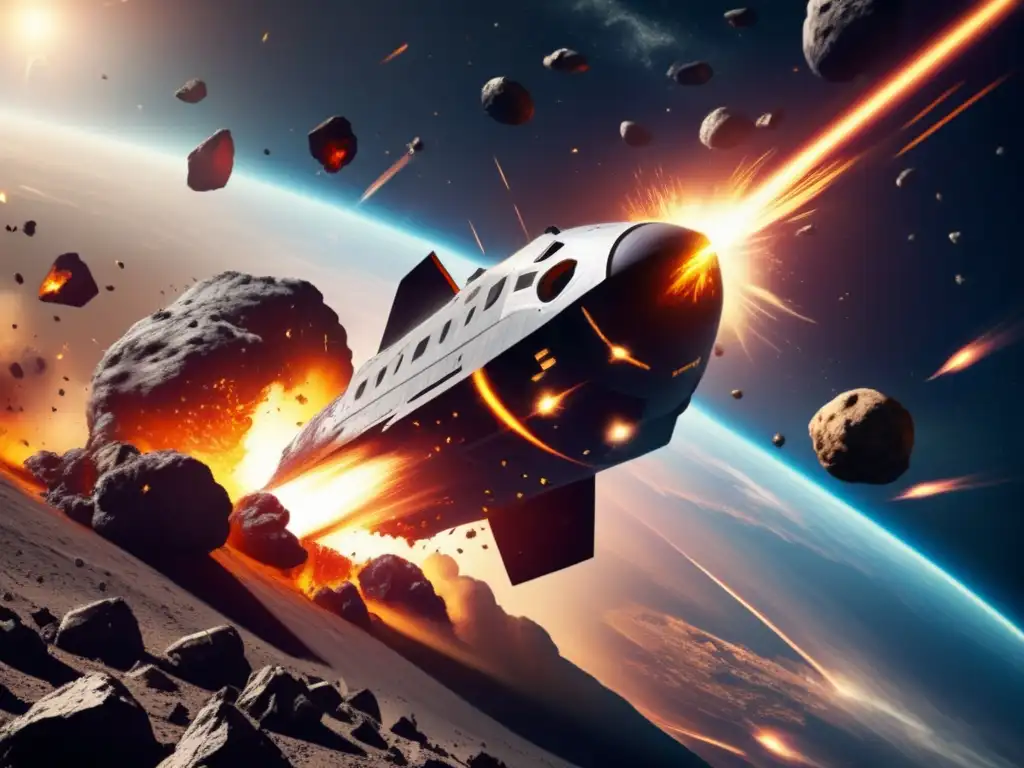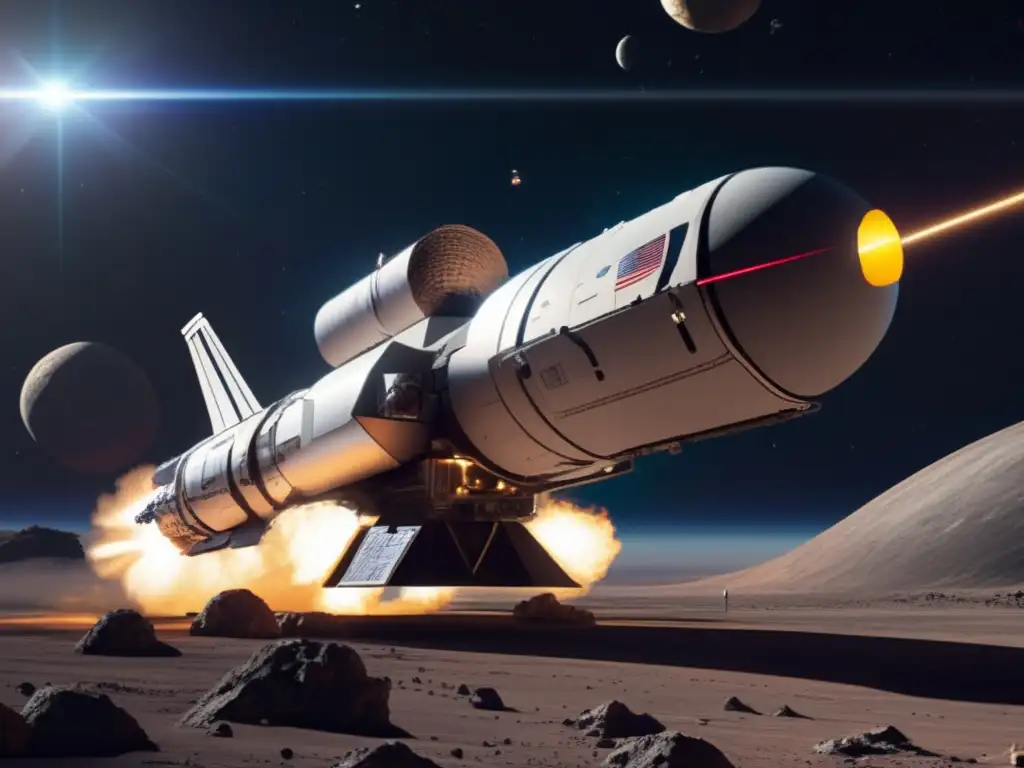Ready For Impact: The Latest In Planetary Defense Strategies

Introduction
Asteroids and other near-Earth objects pose a significant threat to our planet. With the potential to cause catastrophic damage and loss of life, it's critical that we have effective planetary defense strategies in place. In recent years, there have been significant advancements in this field, including new technologies and methods for detecting, tracking, and deflecting asteroids before they can impact Earth. This article will explore the latest in planetary defense strategies and how they are helping to protect our planet from the threat of asteroid impacts.
The Importance of Early Detection

Space-based Telescopes
One of the critical components of planetary defense is early detection. The sooner we detect an asteroid on a collision course with Earth, the more time we have to develop and deploy a deflection strategy. To achieve early detection, NASA and other space agencies operate a network of ground-based telescopes specifically designed to locate potentially hazardous asteroids. In recent years, there has been a significant shift towards using space-based telescopes as well. These offer several advantages over ground-based telescopes, including a wider field of view and the ability to observe asteroids during daylight hours. One notable example of a space-based telescope is the NEOWISE mission, which uses an infrared camera to detect asteroids that are difficult to spot with traditional telescopes.
Laser Ranging
Another technique for early detection is laser ranging, which involves bouncing laser light off an asteroid and measuring the time it takes for the light to return. This method allows astronomers to determine the distance, size, and trajectory of an asteroid with high accuracy. Recently, NASA and the European Space Agency launched the Asteroid Impact and Deflection Assessment (AIDA) mission, which will use laser ranging to study the impact of a spacecraft on an asteroid. The data collected from this mission will provide valuable insights into how we can deflect asteroids away from Earth.
Artificial Intelligence
Artificial intelligence (AI) is another technology that is revolutionizing planetary defense. AI algorithms are being used to analyze vast amounts of data from telescopes and other sensors to identify potentially hazardous asteroids. This allows astronomers to prioritize their efforts and focus on the objects that pose the greatest threat. In addition, AI is being used to develop simulations that can predict the behavior of asteroids and help us determine the best deflection strategies.
Deflecting Asteroids

Kinetic Impact
One of the most promising methods for deflecting asteroids is kinetic impact. This involves sending a spacecraft to collide with an asteroid at high speed, effectively pushing it off course. NASA's Double Asteroid Redirection Test (DART) mission, scheduled for launch in 2021, will be the first mission to test this technique. DART will target the asteroid Didymos and its moonlet, and the impact is expected to change the orbit of the moonlet by a small amount, which will be observable from Earth.
Gravity Tractor
Another deflection strategy is the gravity tractor, which involves using the gravitational pull of a spacecraft to gradually alter the trajectory of an asteroid. This method would require a long lead time, as the spacecraft would need to remain near the asteroid for an extended period. However, it has the advantage of being a more gentle and precise method of deflection, reducing the risk of the asteroid breaking apart and causing multiple impacts. NASA's Asteroid Redirect Mission, which has been canceled but was planned to launch in the 2020s, would have used a gravity tractor to redirect a small asteroid into orbit around the Moon for study.
Nuclear Explosions
While controversial, nuclear explosions have been proposed as a last resort option for deflecting a large asteroid that is on a collision course with Earth. This method involves detonating a nuclear device near the asteroid, which would create a shock wave that could potentially alter its trajectory. However, the use of nuclear weapons in space raises significant ethical and political concerns, and there are also questions about the effectiveness of this strategy. Therefore, it's likely that other methods will be pursued before resorting to nuclear explosives.
Preparing for Impact

Emergency Response Planning
While planetary defense strategies are focused on preventing asteroid impacts, it's essential to be prepared for the possibility of an impact. Emergency response planning involves developing procedures for evacuating at-risk areas, providing medical assistance, and coordinating with local and national authorities. In addition, researchers are studying how the impact of an asteroid could affect the atmosphere, climate, and biosphere of our planet so that we can prepare for the potential aftermath of an impact.
Education and Public Outreach
Finally, education and public outreach are critical components of planetary defense. By providing accurate information about the threat of asteroids and the efforts being made to protect our planet, we can raise awareness and encourage support for these efforts. NASA and other organizations offer a range of educational resources and programs for students, teachers, and the general public to learn more about asteroids and planetary defense.
Frequently Asked Questions

-
What is the likelihood of an asteroid impact?
While the chances of an asteroid impact are relatively low, they are not zero. NASA and other organizations are taking steps to improve our ability to detect and deflect potentially hazardous asteroids.
-
How much warning would we have before an asteroid impact?
The amount of warning would depend on the size and trajectory of the asteroid. For smaller objects, we may only have a few days or weeks of warning, while larger asteroids could be detected years or even decades in advance.
-
What would happen if an asteroid hit the Earth?
The effects of an asteroid impact would depend on the size and speed of the asteroid. A large asteroid could cause widespread destruction and loss of life, while a smaller one might only cause localized damage.
-
What is the best way to deflect an asteroid?
There is no one-size-fits-all answer to this question since the best deflection strategy will depend on the size, composition, and trajectory of the asteroid. NASA and other organizations are testing multiple methods, including kinetic impact and gravity tractor.
-
What can I do to help protect the Earth from asteroid impacts?
You can support the efforts of NASA and other organizations by staying informed about the threat of asteroids, participating in educational programs, and advocating for planetary defense funding and research.
Conclusion
The threat of asteroids is real and requires careful attention and planning. Fortunately, there have been significant advancements in planetary defense in recent years, including new technologies for detecting, tracking, and deflecting asteroids. By continuing to invest in these efforts, we can protect our planet from the potentially catastrophic consequences of an asteroid impact.
We encourage readers to share their thoughts and comments about planetary defense and asteroid impacts. For further information, please visit the NASA Planetary Defense Coordination Office website.
Additional Resources

- NASA Center for Near-Earth Object Studies
- Space.com's Asteroid Defense News and Analysis
- The Planetary Society's Planetary Defense Advocacy
 The Battle Against Asteroids: Techniques For Planetary Defense
The Battle Against Asteroids: Techniques For Planetary Defense Guarding Against Galactic Threats: Strategies For Asteroid Defense
Guarding Against Galactic Threats: Strategies For Asteroid Defense Planetary Protectors: The Science Of Asteroid Defense
Planetary Protectors: The Science Of Asteroid DefenseIf you want to discover more articles similar to Ready For Impact: The Latest In Planetary Defense Strategies, you can visit the Planetary Defense category.
Leave a Reply

Articulos relacionados: